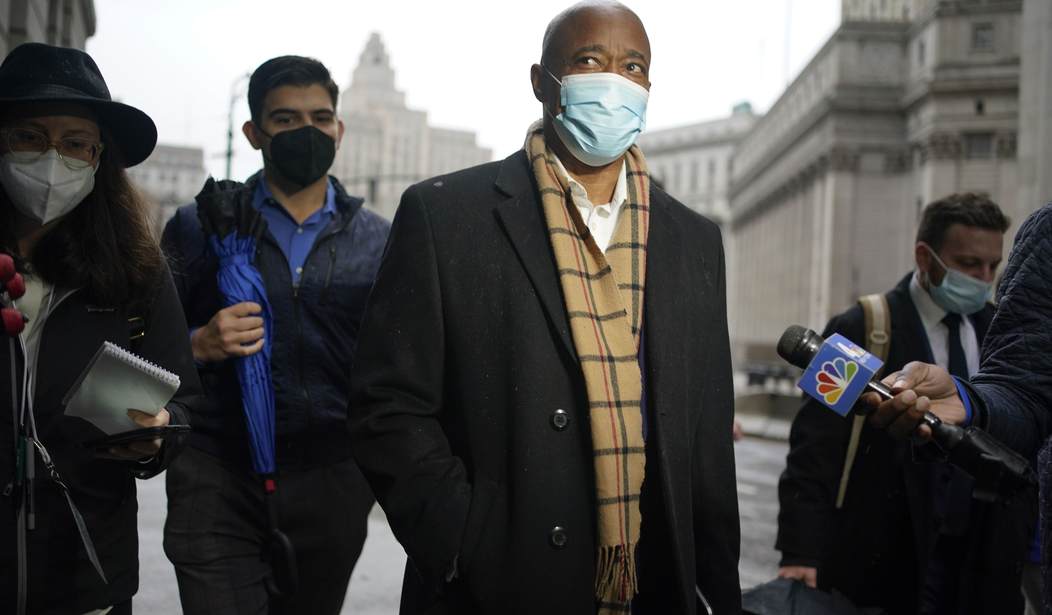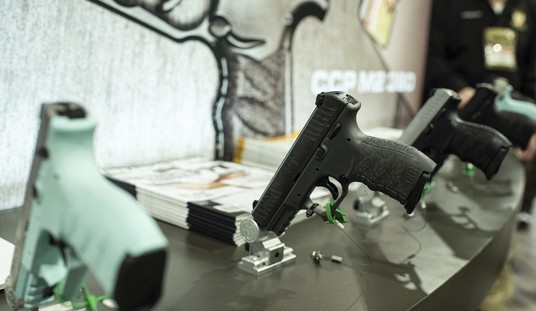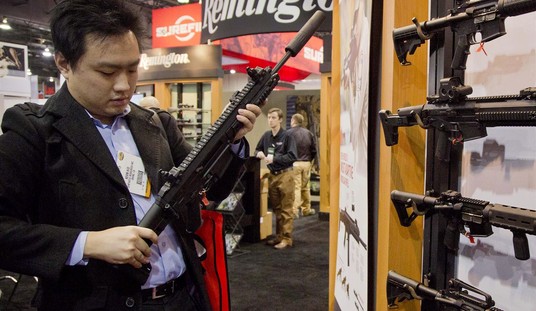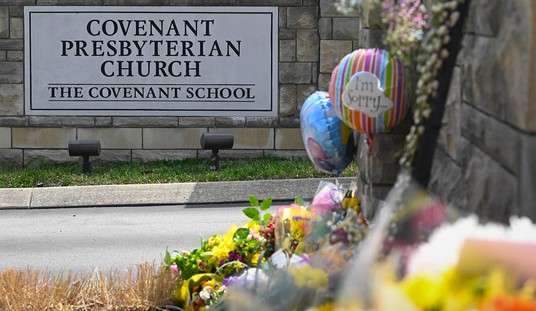There are some genuinely good ideas in New York City Mayor Eric Adams’ strategy to fight violent crime that he unveiled on Monday. Focusing on the 30 precincts where 80% of the city’s violent crime takes place, for instance, is smart policing.
But there’s also an anti-gun ideology that permeates the mayor’s plan; one that depends on continuing to treat the right to keep and bear arms as if it’s a privilege that’s largely off-limits to New York City residents. From Adams’ call for federal universal background checks to ramping up stop-and-frisks, the mayor’s plan calls for restricting, rather than respecting, the right to keep and bear arms.
The New York Post’s Bob McManus noticed the emphasis on “getting guns off the street” and sounds hopeful that a return to the Bloomberg-era strategy of plainclothes officers conducting large numbers of stop-and-frisks will pay off.
The mayor makes much of the fact that the NYPD confiscated 6,000 illegal guns last year, and has collected 350 more since Jan. 1. These are impressive numbers.
But here’s the thing: New York was awash in illegal guns in the ’80s and ’90s — and then all of a sudden it seemed that it wasn’t. And that was because vigorous anti-gun law enforcement and stiff penalties suddenly made it too dangerous for criminals to carry — and so they largely stopped doing so.
When the de Blasio administration abandoned those policies, the heat came off, the guns came back, violence flared and suddenly some New York neighborhoods were war zones.
In a nutshell: More guns confiscated simply means more guns present in the first place, which is a function of lame law enforcement. That’s why targeting the trigger-pullers, as the mayor promises, is so important.
There’s a big difference between targeting the “trigger-pullers” and targeting anyone caught carrying a firearm without a license. As New York City public defenders have detailed, there are plenty of people charged and convicted of the violent felony offense of unlicensed possession of a handgun who are legal gun owners or individuals who were simply carrying because they were concerned for their safety and knew that they’d never qualify for a permit under New York’s ridiculously restrictive carry laws.
McManus seems to believe that the hundreds of thousands of stop-and-frisks that took place every year during Michael Bloomberg’s time as mayor helped drive down the city’s violent crime rate. There are a lot of reasons why I don’t buy that theory, starting with the fact that violent crime was also declining across the country at the same time it was dropping in New York City, including plenty of jurisdictions that weren’t nearly as reliant on stop-and-frisks as the Big Apple.
There’s also the fact that at the height of Bloomberg’s stop-and-frisk frenzy, nearly 90% of those subjected to a frisking were sent on their way without charges. If a “reasonable suspicion” leads you to stop someone, but 9 out of 10 times you don’t find anything of interest on them, how reasonable were those suspicions in the first place?
So, most stop-and-frisks don’t lead to arrests, and those that do are far more likely to end in charges of illegally possessing a gun, not illegally using it in the commission of a crime.
These types of arrests help police and prosecutors pad their statistics, but they don’t actually do anything to reduce violent crimes. In order to do that you have to focus on violent offenders, and McManus seems less than impressed with that part of the mayor’s new plan.
It’s true that the plan comes with obscure details, beside-the-point gun-trafficking rhetoric and pedestrian pledges to address social concerns linked to crime — and so on and so forth.
Indeed, the lard is so thick that it gets in the way of what seems to be a clear-eyed exposition of what really enables violent street crime: weak-willed policing complicated by wrong-headed penal-code “reforms” driven by deeply problematic radical state and local politicking.
This isn’t limited to New York, of course. It’s driving urban chaos across the country — and the effect is not limited to gun violence. Out-of-control vagrancy, publicly expressed untreated mental illness, organized shoplifting/looting and so on all need to be addressed. Happily, the Adams plan seems aware of these challenges.
“Aware of” and “prioritizing” are two very different things, and at this point it’s clear that Adams’ biggest priority is going after guns in the hopes that will cut down on the urban chaos McManus describes.
Frankly, with the Supreme Court set to rule on New York’s carry laws later this year, if Adams really wanted to be proactive he’d be pushing to make gun training and firearms safety education available in all five boroughs, as well as calling on the New York City Council to adopt a “shall-issue” licensing system in anticipation of the Court’s ruling. The “guns are bad” mentality inherent in New York’s politics may not disappear anytime soon, but Adams and other leaders are deluding themselves by pretending that they can keep residents separated from their Second Amendment rights forevermore, and that the best way to fight violent crime is to restrict the rights of the law-abiding.









Join the conversation as a VIP Member